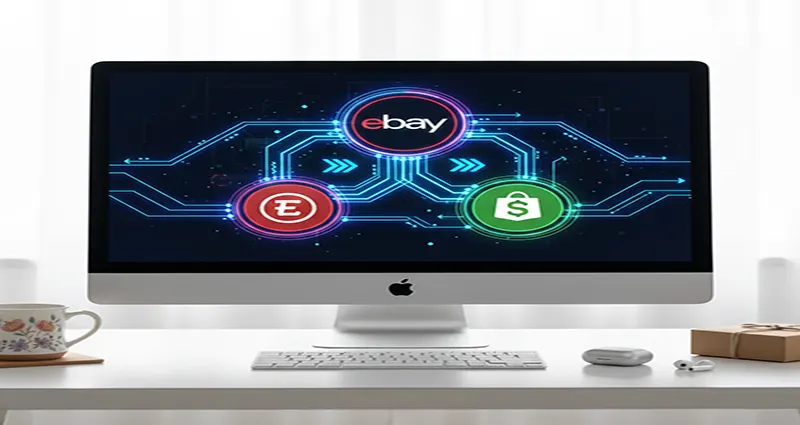The profitability of multi-channel selling is undeniable—listing items on Etsy (for handcrafted credibility), eBay (for mass marketplace exposure), and Shopify (for branded control) maximizes your reach. However, this strategy introduces a critical logistical risk: overselling. The moment a unique item sells on one platform, you must instantaneously update the stock on the other two. Doing this manually is a recipe for inventory discrepancies, negative reviews, and customer frustration. The scalable solution lies in real-time automatic inventory synchronization.
The Failure of Manual Inventory Management
Manual inventory updates simply cannot keep pace with modern e-commerce speed. Imagine you sell a one-of-a-kind jewelry piece on Etsy. By the time you log into Shopify and then eBay to manually reduce the stock, another customer may have already purchased the same item, leading to a costly cancellation and stockout penalty.
Speed and reliability are the critical metrics for successful multi-channel selling. For your business to be scalable, you need a dedicated system that acts as the central source of truth, ensuring consistency 24/7—a task impossible to achieve with human data entry.
Solution Comparison: Essential Sync Tools
Multi-channel inventory sync is handled by specialized third-party software that connects the APIs of all three platforms. These tools differ mainly by cost, speed, and the complexity of features they offer:
| Tool Category | Example Tools | Key Feature | Best For |
| All-in-One Platforms | Sellbrite, Multiorders, LitCommerce | Centralized order fulfillment and bulk listing. | Growing businesses needing a unified dashboard. |
| Dedicated Stock Sync | Trunk, QuickSync, Syncr | Ultra-fast, near real-time inventory adjustments. | Sellers prioritizing speed and avoiding oversells. |
| Enterprise Solutions | ChannelAdvisor, Zoho Inventory | Advanced analytics, forecasting, and warehousing support. | High-volume sellers ($50K+/month) with complex needs. |
Crucial Feature Check: When evaluating tools, confirm support for Variant Syncing. If your item has multiple sizes or colors, the software must recognize that a sale of a specific variant on one platform only reduces the stock of that exact variant across all other channels. You also need strong Error Logging to quickly address any failed sync attempts.
The Seamless Automation Workflow
The fundamental principle of automatic syncing is establishing a Master Inventory Hub. For most growing brands, Shopify is the ideal hub because it provides maximum control over SKUs and is designed to integrate seamlessly with thousands of apps.
The automation workflow is simple yet powerful:
- The Master Key: Identical SKUs: Every product, and every variant, must be assigned an identical and unique SKU (Stock Keeping Unit) across Etsy, eBay, and Shopify. This is the only way the sync tool can map “NECK-001-GOLD” on Etsy to the exact same item on eBay.
- The Trigger: A customer places an order on eBay.
- The Sync Action: The inventory tool detects the order instantly and first reduces the master stock level in Shopify.
- The Cascade: The tool immediately pushes the newly updated, reduced stock quantity to Etsy (and any other connected channels).
This bi-directional, near-real-time process prevents stockouts and eliminates hours of administrative work, allowing the seller to focus on creating new products and marketing.
Next Steps
Scaling a multi-channel business is impossible without automated inventory synchronization. It moves your business from reactive to proactive, securing customer satisfaction and maintaining marketplace seller health scores. Start by taking advantage of the free trials offered by reputable sync tools like Trunk or Sellbrite to test their speed and reliability against your current sales volume and budget.











